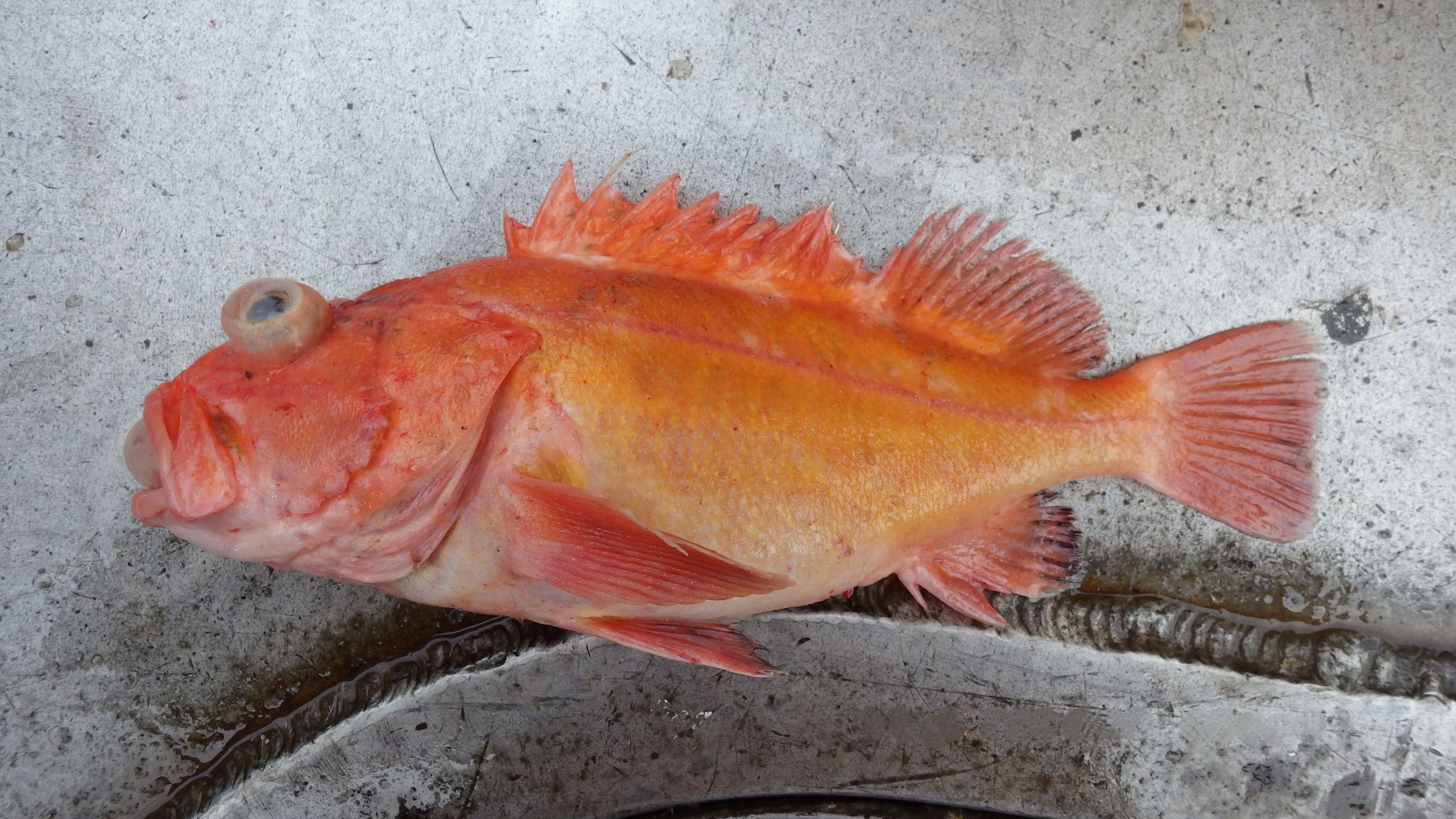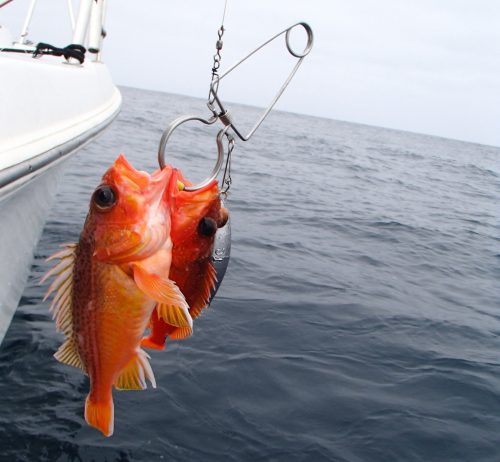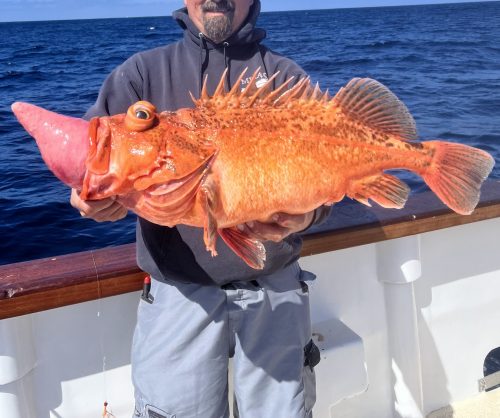Fish Descending Devices
What Is Barotrauma?
 Barotrauma is a pressure-related injury that affects rockfish when they are rapidly brought to the surface from deep water. Rockfish have a swim bladder, a gas-filled organ that regulates their buoyancy. During a rapid ascent, the gases in the swim bladder expand due to the decrease in pressure, leading to various injuries. These can include swollen bodies, protruding stomachs, and bulging or crystallized eyes. The severity of barotrauma varies among rockfish species, as their swim bladders are adapted to specific depths and pressures. Although these injuries can make the fish appear dead, they often are not. Rockfish suffering from barotrauma can be re-pressurized by returning them to their original depth. If not returned, they may float at the surface, unable to descend, and are at risk of dying or being eaten by predators.
Barotrauma is a pressure-related injury that affects rockfish when they are rapidly brought to the surface from deep water. Rockfish have a swim bladder, a gas-filled organ that regulates their buoyancy. During a rapid ascent, the gases in the swim bladder expand due to the decrease in pressure, leading to various injuries. These can include swollen bodies, protruding stomachs, and bulging or crystallized eyes. The severity of barotrauma varies among rockfish species, as their swim bladders are adapted to specific depths and pressures. Although these injuries can make the fish appear dead, they often are not. Rockfish suffering from barotrauma can be re-pressurized by returning them to their original depth. If not returned, they may float at the surface, unable to descend, and are at risk of dying or being eaten by predators.
Release and Recompression
When releasing fish suffering from barotrauma, doing it correctly is important. Anglers can use a variety of descending devices to return rockfish to their capture depth, which helps reverse the effects of barotrauma and significantly increases the fish’s chances of survival. These devices include inverted barbless hooks, jaw clamps, inverted milk crates, and pressure-activated clamps that release automatically at depth. Descending devices are available at tackle shops, online, or can be made at home.
To minimize stress and injury, have a descending device ready to use and handle rockfish gently and quickly. If the fish shows no signs of barotrauma, release it directly into the water. However, if the fish is unable to descend or shows signs of barotrauma (e.g., bulging eyes, a protruding stomach), use a descending device to return it to the appropriate depth. Avoid venting or puncturing the fish’s body or swim bladder, as this can cause serious injury or infection.

Types of Descending Devices
- Shelton Fish Descender: An inverted, barbless hook used to release a fish at a depth greater than 30 ft.
- SeaQualizer: A non-invasive lip clamp device. The standard version releases fish between 50-150 ft, and the deep version releases fish between 100-300 ft.
- Milkcrate: This homemade option is both lower cost and easy to use. For information on how to construct this device visit here.
- Fish Grip Device: Another homemade option is to make your device using Fish Grips. Instructions, courtesy of the Oregon Department of Fish and Wildlife (ODFW), can be found here.


Descending Device Release Demonstration
Video courtesy of Angler West TV and Oregon Coalition for Educating Anglers (OCEAN)
More Resources
For more information on barotrauma and recompression, please visit the links below.
- Rockfish Barotrauma Information– California Department of Fish and Wildlife
- Rockfish Recompression– Oregon Department of Fish and Wildlife
- Protecting Washington’s Rockfish– Washington Department of Fish and Wildlife
- Rockfish Conservation– Alaska Department of Fish and Wildlife
- Rockfish Barotrauma and Recompression– NOAA Fisheries

